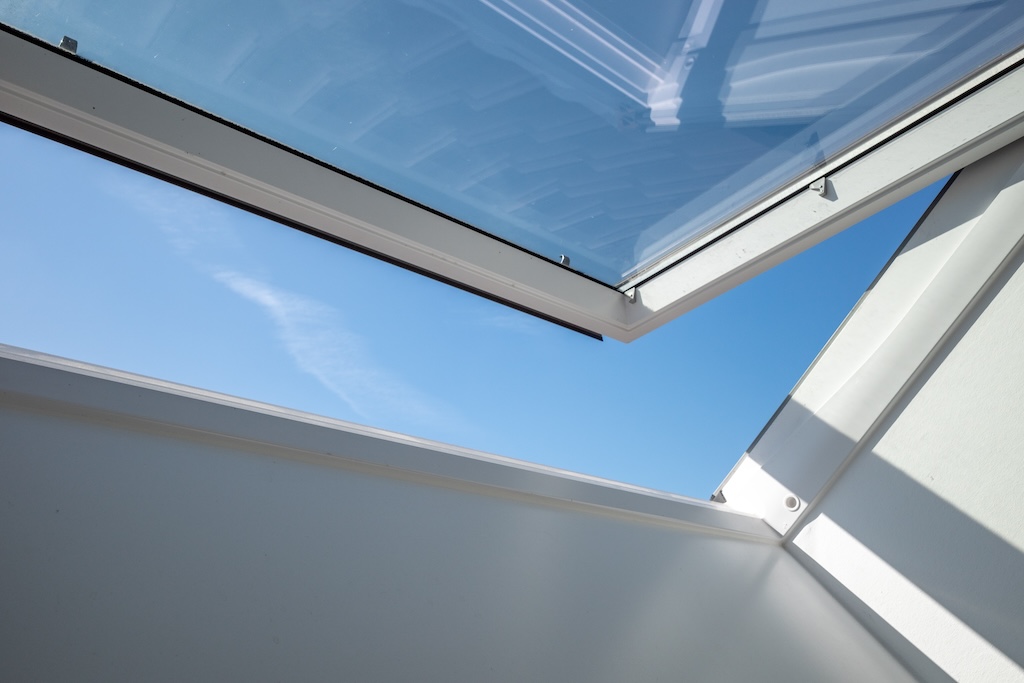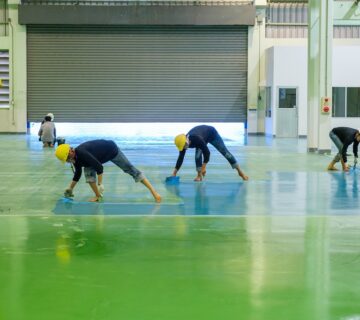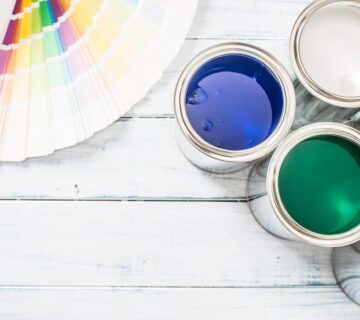Indoor painting projects can refresh and revitalize your living spaces, adding a new vibrancy that can transform the look and feel of your home. However, these projects require careful handling to ensure they don’t compromise indoor air quality. Paint fumes, especially those from paints containing volatile organic compounds (VOCs), can cause significant discomfort and health issues, such as headaches, dizziness, and respiratory problems. Ensuring adequate ventilation is crucial for maintaining a safe environment when painting indoors. Properly managing the air quality during these projects is essential not only for comfort but also for safety, particularly when working in enclosed spaces.
Understanding the Importance of Ventilation
The primary purpose of ventilation during painting is to disperse harmful paint fumes and introduce fresh air into the environment, thereby reducing the concentration of pollutants. Effective ventilation not only minimizes the health risks associated with these fumes but also helps paint dry more quickly and evenly. Good ventilation practices can enhance the overall painting process by preventing the buildup of toxic fumes and ensuring a safer working environment. This makes the painting project more pleasant and safe for everyone involved, especially in living spaces that are used daily.
Open Windows and Doors
The simplest and most effective way to ventilate a room while painting is by opening windows and doors. Creating a cross-flow of air helps to carry the fumes outside, replacing them with fresh air. Ideally, try to open multiple windows or doors on opposite sides of the room to enhance this cross breeze, which can dramatically improve air circulation and reduce the buildup of fumes. This method is particularly effective in larger rooms where air circulation can play a crucial role in dispersing paint fumes.
Use Fans Strategically
Introducing fans can significantly boost your ventilation strategy. Position a box fan in the window so it blows outward, effectively pulling fumes out of the room. Additionally, consider placing another fan at the doorway or another window to help draw fresh air into the room. It’s crucial to ensure that the fans are set up to move the air in a way that directs the fumes away from your working area and out of the room, maximizing the removal of polluted air. Strategically placed fans can make a substantial difference in maintaining air quality and ensuring that fumes do not linger in the space.
Take Breaks and Rotate Workspaces
For larger painting projects or when working across multiple rooms, it’s beneficial to plan your work so that you can rotate between different areas. This rotation allows each area ample time to ventilate while you continue working elsewhere. Furthermore, taking regular breaks to step outside into fresh air is important for your health, giving you a break from any lingering fumes. These practices not only improve the safety of the painting process but also help maintain high productivity levels by minimizing health risks associated with prolonged exposure to paint fumes.
Consider the Use of Air Purifiers
While air purifiers alone are not enough for proper ventilation, using one with an activated carbon filter can help reduce the concentration of VOCs and other air pollutants. This method can be particularly useful in rooms where options for natural ventilation are limited. Although not a substitute for proper airflow, air purifiers can serve as an effective supplementary measure. They are especially helpful in maintaining air quality in spaces where windows and doors cannot be opened sufficiently.
Seal Off the Work Area
If your painting project is confined to a specific part of the house, consider sealing off that area to prevent fumes from spreading throughout your home. You can use plastic sheeting or drop cloths to cover doorways and other openings. However, it’s important to ensure that this does not compromise the ventilation within the painting area itself. Properly sealing off the work area can help localize fumes to the workspace while protecting the rest of the house from exposure.
Choose Low-VOC or No-VOC Paints
Opting for low-VOC or no-VOC paints is an excellent way to reduce the need for aggressive ventilation. These paints release fewer harmful chemicals into the air, making them a healthier choice, especially for enclosed spaces or projects during colder months when opening windows isn’t practical. Choosing these types of paints can significantly decrease the risk of health issues and improve the comfort of your indoor environment during and after the painting process.
Monitor the Temperature and Humidity
The effectiveness of your ventilation efforts can also be influenced by temperature and humidity levels. High temperatures can increase the potency of paint fumes, while high humidity can slow down the drying process, prolonging the time during which fumes are released. It’s best to paint under conditions that are conducive not only to efficient drying but also to effective ventilation. Monitoring and adjusting these environmental factors can greatly enhance the effectiveness of your ventilation strategies and overall project success.
Final Thoughts
Proper ventilation is crucial for any indoor painting project, playing a key role in ensuring both the health of those involved and the overall success of the project. By implementing these tips, you can maintain a healthier environment and achieve better results with your painting endeavors. Remember, the effort you put into ventilating your space not only protects your health but also contributes to a better painting result, making your newly transformed space safer and more enjoyable to live in. For more tips on indoor painting and home improvement, visit our website at sisupainting.com and explore our blog at sisupainting.com/blog.





No comment